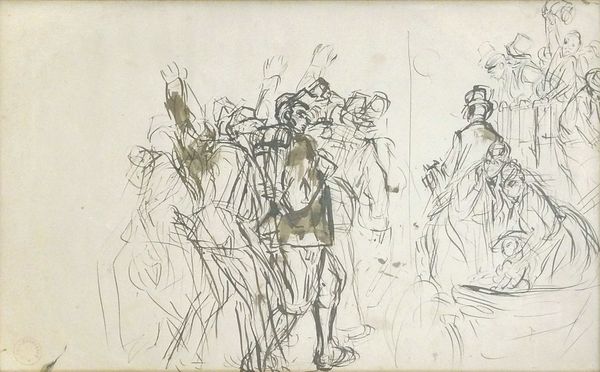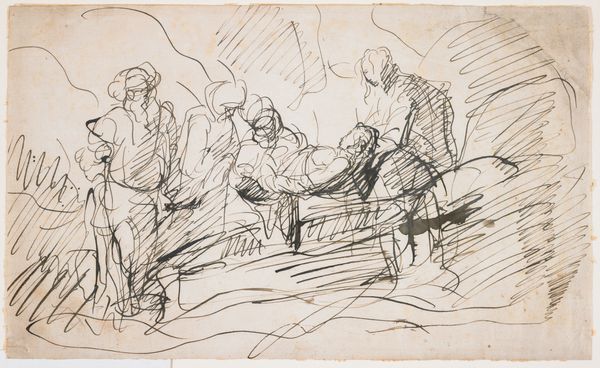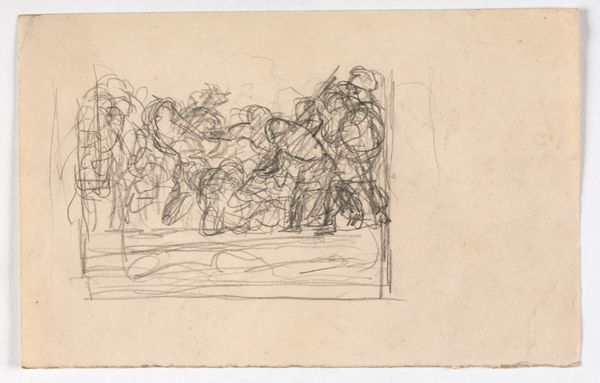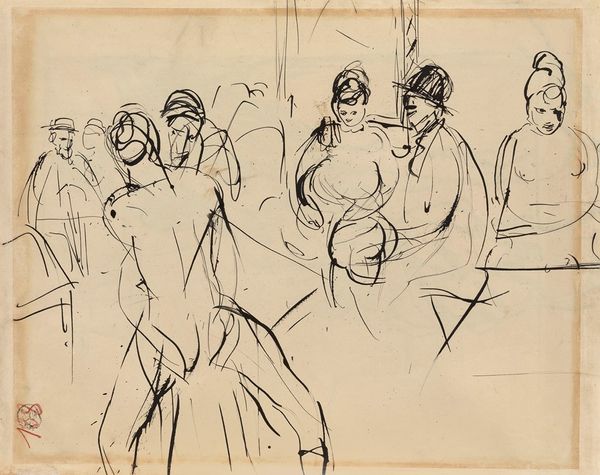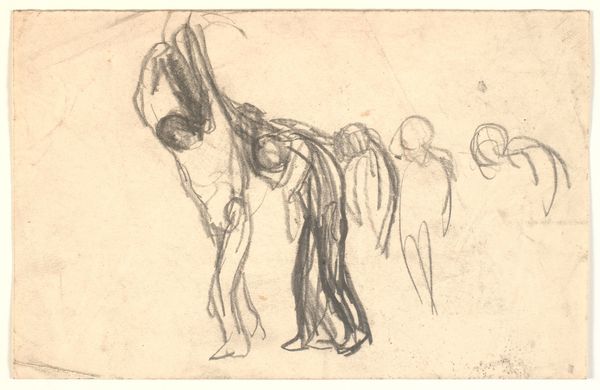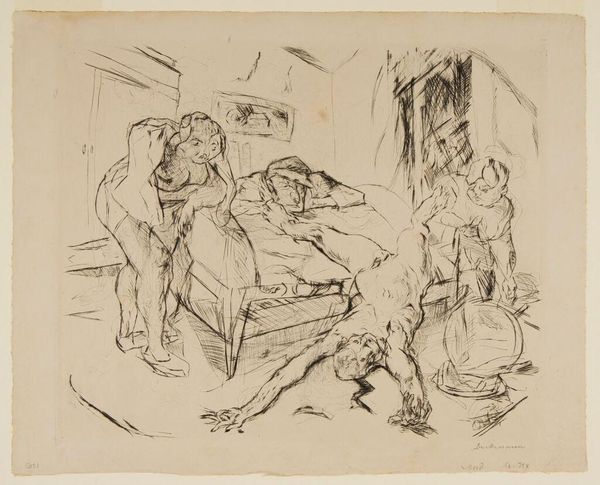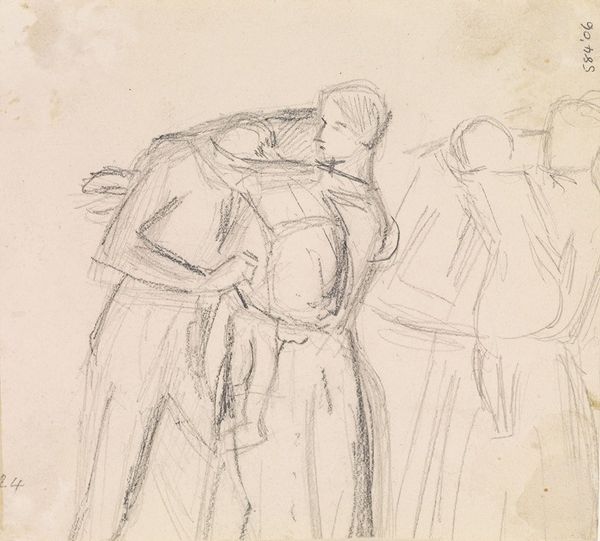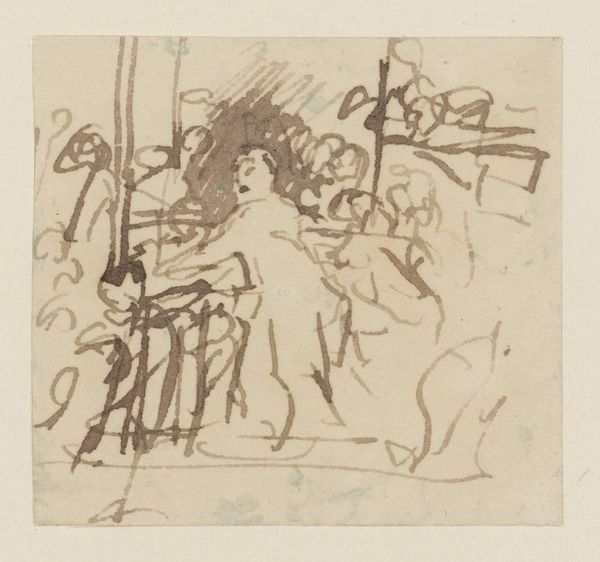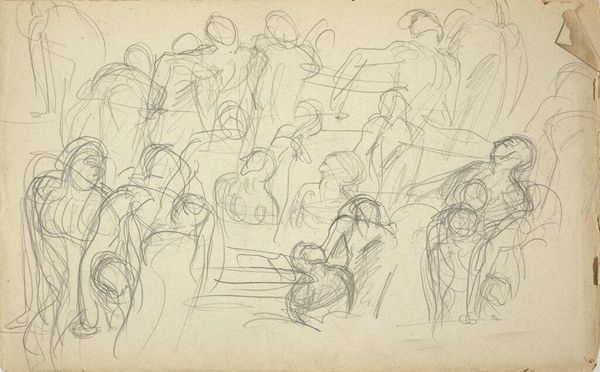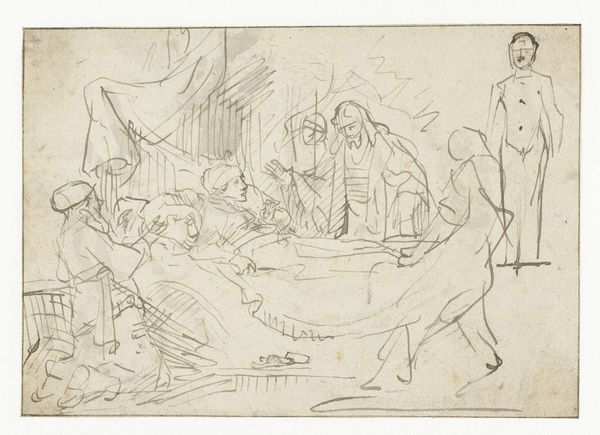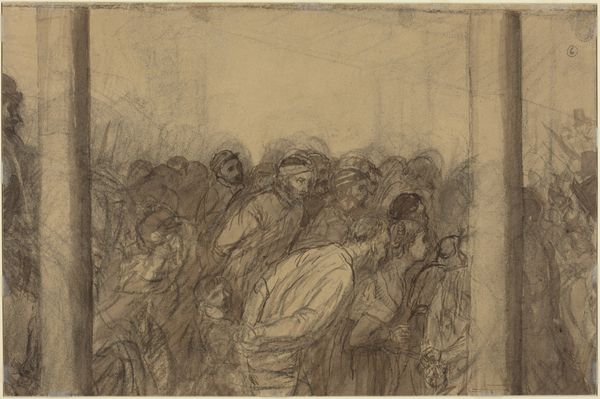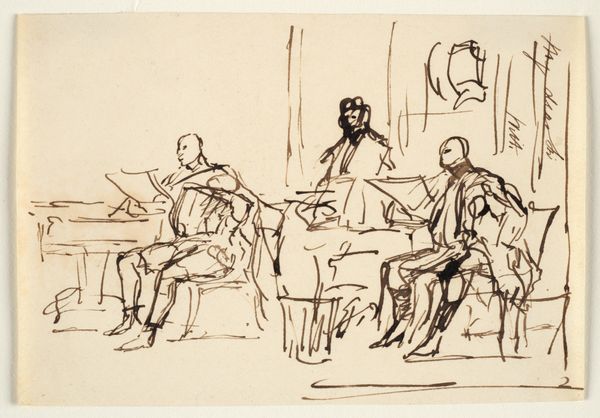
Drawing from Veronese’s ‘The Magdalen Laying Down her Jewels’ (National Gallery). Verso: Drawing from Veronese’s ‘The Magdalen Laying Down her Jewels’ (National Gallery) 1955
0:00
0:00
Dimensions: support: 217 x 267 mm
Copyright: © Frank Auerbach | CC-BY-NC-ND 4.0 DEED, Photo: Tate
Curator: Frank Auerbach's "Drawing from Veronese’s ‘The Magdalen Laying Down her Jewels’" is held here at the Tate. It's a study, really, capturing the essence of Veronese's original. Editor: My first thought? It feels like a memory struggling to surface. The lines are so gestural, as if grasping for something just out of reach. It's a bit frantic, don't you think? Curator: Frantic, yes, but also full of energy. Auerbach isn't simply copying; he's wrestling with Veronese, pulling out the raw emotion. Think about the Magdalen herself – renouncing her wealth. It is a revolutionary act. Editor: Absolutely. It's a moment of radical self-redefinition, isn't it? Auerbach amplifies that internal struggle through his mark-making. The sketchiness echoes the instability of that very decision. What does it mean for a woman to own her body and her destiny? Curator: It's almost as if Auerbach is showing us the tremors of such change. He's not giving us pretty perfection; he's giving us the guts of transformation. The drawing possesses a raw beauty. Editor: And perhaps the challenge is to also capture what is missed in translation, to consider our own subjectivities and the politics of viewing and being viewed. Curator: True. Auerbach leaves us not with answers, but with a feeling that the conversation has just begun. Editor: Yes, and that's where its power resides. We must keep looking.
